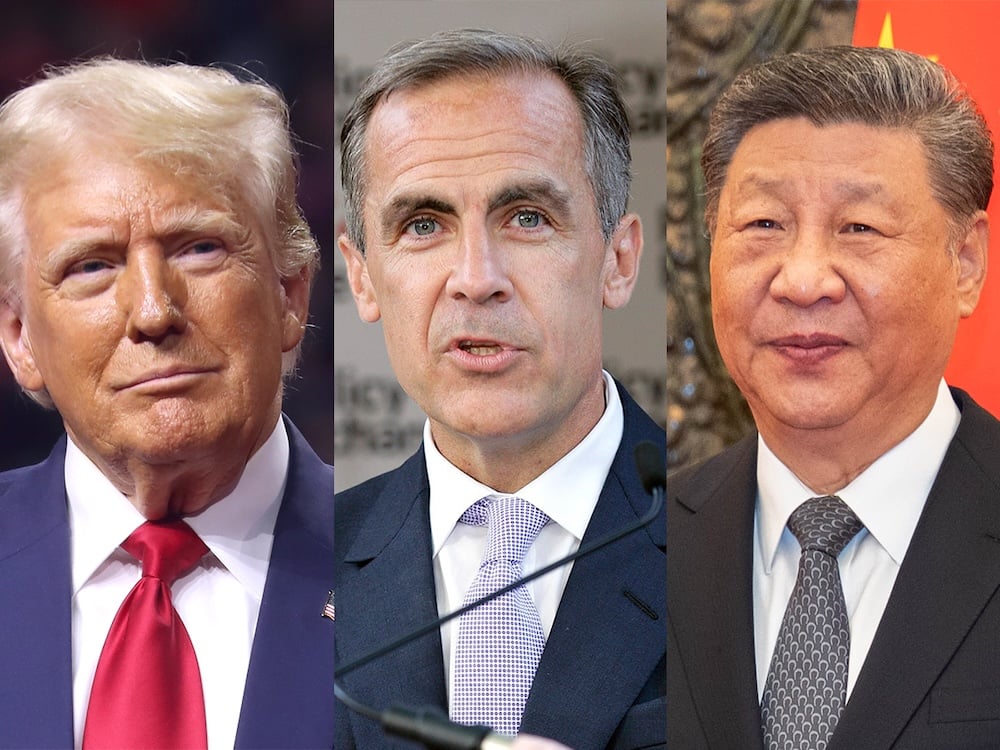Top Stories
U.S. War Department Invests $35 Million in B.C. Mining Venture

Last week, Vancouver-based Trilogy Metals announced a significant investment agreement with the U.S. Department of War, acquiring a 10 percent stake in the mining company for over $35 million. This investment is aimed at developing a 2,000-square-kilometre mineral deposit located in remote northern Alaska. The move underscores the strategic importance of the Upper Kobuk Mineral Projects in addressing U.S. energy, technology, and national security needs, according to Trilogy’s president and CEO, Tony Giardini.
Following the announcement, Trilogy’s stock value surged, reflecting investor optimism regarding the potential of the mineral resources involved. The U.S. government’s interest in the mining sector is not new; on October 1, 2023, the Department of Energy disclosed a five percent stake in Lithium Americas and its Thacker Pass lithium mine in Nevada. This follows a previous Pentagon investment in MP Materials, which operates the only rare earth elements mine in the United States.
According to Werner Antweiler, an associate professor at the UBC Sauder School of Business, direct government investments in companies are rare. He noted that governments typically provide support through loans or guarantees rather than ownership stakes. “Historically, governments have always invested in industries that they found to be of national importance,” he said. This trend aligns with the U.S. government’s focus on critical minerals, essential for modern technologies and military applications.
Critical minerals are increasingly recognized as vital for the global energy transition, being integral to the production of electric vehicle batteries, solar panels, wind turbines, and military equipment. Current geopolitical tensions, including trade disputes and conflicts in Ukraine and the Middle East, have heightened U.S. interest in securing supplies of these materials. Over the past six months, China, which dominates the global production of critical minerals, has restricted exports to the U.S., raising concerns about potential shortages.
While previous U.S. administrations have sought to secure mineral supplies through various geopolitical maneuvers, such as President Donald Trump’s controversial comments on Canada and Greenland, the current approach appears to focus on direct investments in mining operations. Antweiler expressed concern over the implications of these investments. “It looks problematic in the context of current Canada-U.S. relations,” he noted, emphasizing the need for transparency and clarity in U.S. motives.
In a broader context, military spending worldwide has soared, reaching an unprecedented $2.7 trillion in 2022, according to a report from the United Nations. This represents a nearly 10 percent increase compared to the previous year and the largest rise since the Cold War. Brent Patterson, executive director of Peace Brigades International Canada, highlighted that this surge in military expenditure is accompanied by a growing demand for critical minerals, which are utilized in advanced military technologies.
In Canada, a similar trend is emerging. The Canadian government has committed to increasing defense spending, which is projected to rise from approximately $33 billion annually to $150 billion by 2035. This commitment has generated excitement within the natural resource sector, particularly for companies involved in mining critical minerals. Scott Eldridge, CEO of Military Metals, remarked that the increased government investment creates a “headlong rush towards military spending.”
Mining companies are optimistic about the influx of capital into the sector, with Eldridge referring to a “tsunami of capital” coming into critical minerals. The Canadian federal government has also launched initiatives to support the critical minerals industry, including the Critical Minerals Infrastructure Fund, which offers up to $1.5 billion in funding.
One notable project in British Columbia, the Wicheeda project, is attracting attention for its potential as a significant rare earth element deposit. Led by Mark Tory, who joined Defense Metals as president and CEO in January, the project is recognized as one of the richest rare earth deposits outside of China. The mineral resources at Wicheeda are crucial for both renewable energy technologies and military applications, particularly in the production of permanent magnets.
The Canadian government has expressed support for the Wicheeda project, with Tory indicating that discussions with U.S. officials have taken place to strengthen supply chains for critical minerals. The financing landscape for critical minerals is becoming increasingly competitive, with both Canadian and U.S. investments expected to rise in the coming years.
As Canada faces pressure to cease arms exports to nations accused of human rights violations, the relationship between mining and military spending raises ethical questions. Critics, including Nikki Skuce, co-chair of the BC Mining Law Reform network, emphasize the need for transparency regarding the ultimate use of mined materials. “There’s no ability to track that,” Skuce stated, highlighting the potential for critical minerals to contribute to military applications rather than the energy transition.
While U.S. investment in Canadian mining companies may not pose an immediate threat, the implications for Canada-U.S. relations and the ethical dimensions of these investments warrant careful consideration. Antweiler concluded that while small stakes do not provide controlling interest, the broader geopolitical context makes the situation worth monitoring closely. The evolving landscape of critical minerals and military spending suggests that this issue will remain prominent in discussions surrounding energy security and national defense.
-

 Lifestyle2 months ago
Lifestyle2 months agoWinnipeg Celebrates Culinary Creativity During Le Burger Week 2025
-

 Health2 months ago
Health2 months agoMontreal’s Groupe Marcelle Leads Canadian Cosmetic Industry Growth
-

 Science2 months ago
Science2 months agoMicrosoft Confirms U.S. Law Overrules Canadian Data Sovereignty
-

 Education2 months ago
Education2 months agoRed River College Launches New Programs to Address Industry Needs
-

 Technology2 months ago
Technology2 months agoDragon Ball: Sparking! Zero Launching on Switch and Switch 2 This November
-

 Technology1 week ago
Technology1 week agoDiscord Faces Serious Security Breach Affecting Millions
-

 Science2 months ago
Science2 months agoTech Innovator Amandipp Singh Transforms Hiring for Disabled
-

 Technology2 months ago
Technology2 months agoGoogle Pixel 10 Pro Fold Specs Unveiled Ahead of Launch
-

 Science2 months ago
Science2 months agoChina’s Wukong Spacesuit Sets New Standard for AI in Space
-

 Technology2 months ago
Technology2 months agoWorld of Warcraft Players Buzz Over 19-Quest Bee Challenge
-

 Business2 months ago
Business2 months agoDawson City Residents Rally Around Buy Canadian Movement
-

 Technology1 week ago
Technology1 week agoHuawei MatePad 12X Redefines Tablet Experience for Professionals
-

 Education2 months ago
Education2 months agoAlberta Teachers’ Strike: Potential Impacts on Students and Families
-

 Business2 months ago
Business2 months agoNew Estimates Reveal ChatGPT-5 Energy Use Could Soar
-

 Science2 months ago
Science2 months agoXi Labs Innovates with New AI Operating System Set for 2025 Launch
-

 Technology2 months ago
Technology2 months agoInnovative 140W GaN Travel Adapter Combines Power and Convenience
-

 Technology2 months ago
Technology2 months agoFuture Entertainment Launches DDoD with Gameplay Trailer Showcase
-

 Technology2 months ago
Technology2 months agoGlobal Launch of Ragnarok M: Classic Set for September 3, 2025
-

 Technology2 months ago
Technology2 months agoNew IDR01 Smart Ring Offers Advanced Sports Tracking for $169
-

 Technology2 months ago
Technology2 months agoArsanesia Unveils Smith’s Chronicles with Steam Page and Trailer
-

 Science2 months ago
Science2 months agoNew Precision Approach to Treating Depression Tailors Care to Patients
-

 Business2 months ago
Business2 months agoBNA Brewing to Open New Bowling Alley in Downtown Penticton
-

 Technology2 months ago
Technology2 months agoHumanoid Robots Compete in Hilarious Debut Games in Beijing
-

 Health2 months ago
Health2 months agoGiant Boba and Unique Treats Take Center Stage at Ottawa’s Newest Bubble Tea Shop










